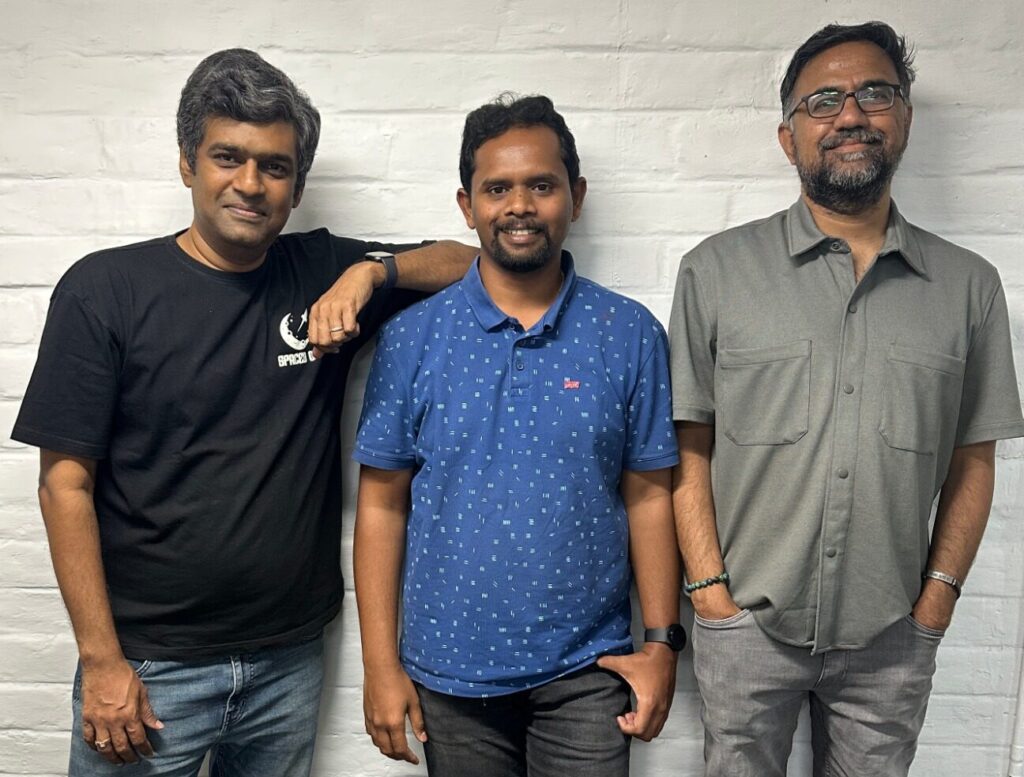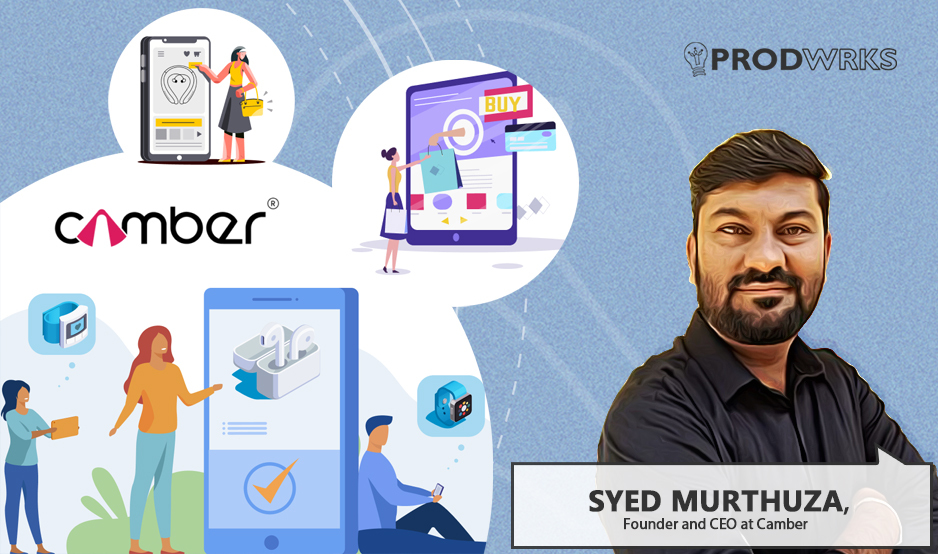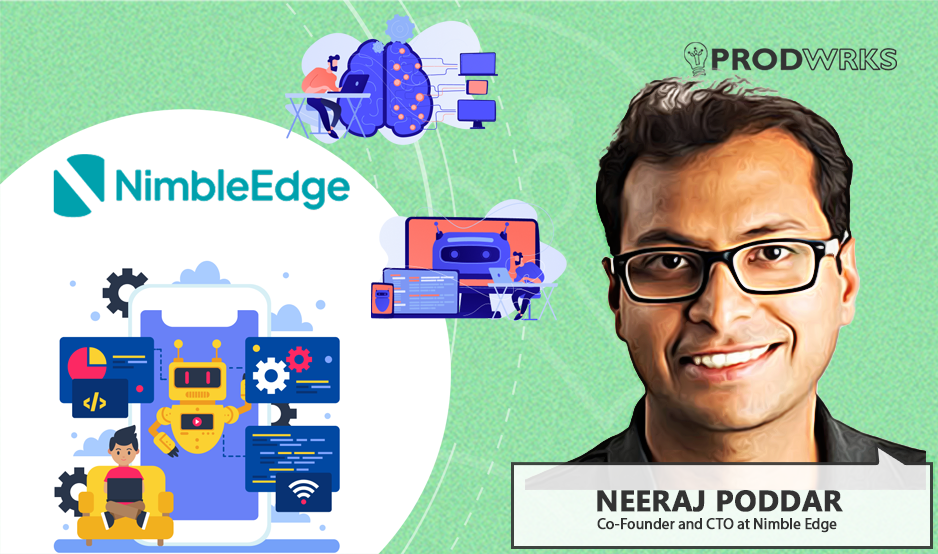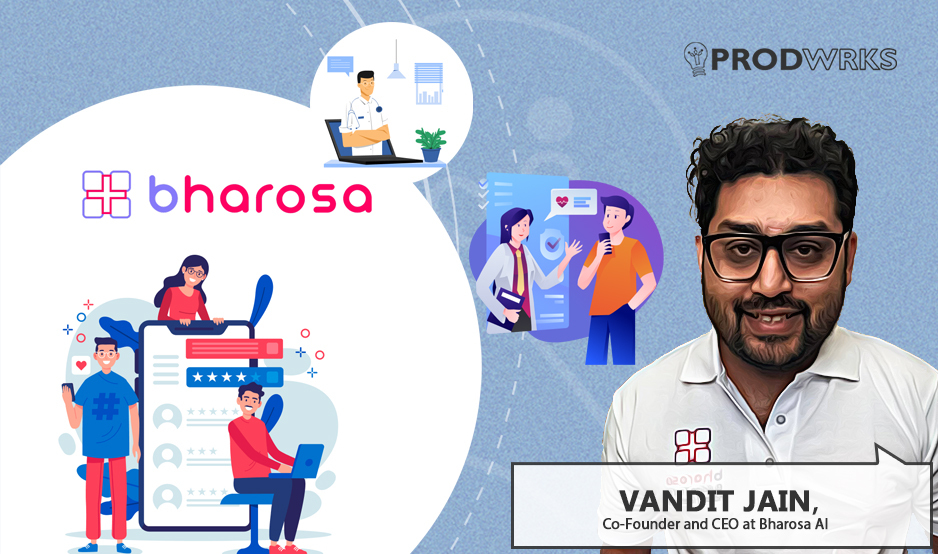
India’s insatiable appetite for credit has spawned a legion of fintech startups promising faster and more accessible loans. Yet, for all the innovation, a dangerous paradox has emerged. Consumers are nudged towards high-interest personal loans and revolving credit card debt via apps where borrowing is just a few clicks away. The easiest credit to obtain often becomes the most expensive and, at times, an irresponsible financial trap that nibbles away at wealth.
Meanwhile, a staggering, largely dormant reservoir of value sits locked away as security holdings. As of 2024, Indians hold over ₹67 lakh crore in mutual fund assets (approximately $790 billion), a figure that swells with every new Systematic Investment Plan (SIP). This wealth, painstakingly built for long-term goals, remains unaccessible short-term liquidity needs of individuals.
This is the gap that Quicklend, a fintech startup founded in December 2023, is determined to bridge. Quicklend is championing a form of “responsible credit” by digitally unlocking instant credit lines against your mutual fund holdings. Their thesis is disarmingly simple. Why borrow at 20% or 40% when you can pledge your mutual funds online to secure a credit line at a fraction of that cost, in under 60 minutes, without selling a single unit of your holdings?
Founded by a trifecta of seasoned fintech veterans, Raghuram Trikutam, Arun Jadhav, and Abhishek Uppala, the company raised a ₹7 crore pre-seed round from firms like Upsparks, Eximius Ventures, and Inuka Capital.
In a conversation with Team ProdWrks, Quicklend’s CEO, Raghuram Trikutam shares why “Quicklend isn’t just another lending app.” He explains their product philosophy, navigating distribution in fintech, and how the future of credit in India lies not in pushing more people into high-cost borrowing, but in digitally unlocking wealth that already exists.
Why the “Math Isn’t Mathing” for Lending in India
Before founding Quicklend, Raghuram, Arun, Abhishek have enginereered marquee products in India’s and Southeast Asia’s startup ecosystem, especially in fintech. Founder-market fit clearly wasn’t a problem to solve for this trio.
Raghuram Trikutam, for instance, has navigated the engineering and product landscapes of Google Pay, Cred, Grab, Freecharge, and Redbus. His co-founder, Arun Jadhav previously led payment teams for Uber in Amsterdam, was a key figure at Grab, joined as one of the first 50 employees at Amazon India. The third co-founder, Abhishek Uppala was the founding engineer for Stripe Payments in India and one of the earliest members of Amazon Pay.
“All the three of us have had a good 3.5 years overlap at Freecharge where we worked together,” says Raghuram.

The genesis of Quicklend wasn’t a sudden eureka moment for these fintech stalwarts. From their collective experience in engineering the fintech landscape in India, all three founders have had a clear observation that the lending market is at an inflection point.
“Over the past 2-3 years, either due to surplus availability of liquidity or otherwise, people have taken a lot of loans at ridiculous interest rates. And it has come back to bite NBFCs, banks, and fintechs,” Raghuram explains.
In fact in 2024, RBI cracked down sub-50,000 unsecured loans offered by financial institutions due to rising credit-exposure risks of lending organizations. But Raghuram identified that the problem was behavioural as much as it was financial.
For instance, an individual might have a substantial mutual fund portfolio but would still opt to rotate their credit card dues viewing their investments as sacrosanct and untouchable. Raghuram points this out as a flaw in personal financial management by most individual borrowers.
“These people who were rotating their credit card dues also had mutual fund holdings, and viewed these two things as separate events. As the GenZ would put it, the math isn't mathing. You are earning returns at 13-14% on a mutual fund, but your expense is probably a 40% interest paid on your credit cards dues and spends. What we are trying to say is… why don’t you pledge your mutual funds and get credit at 10.50% rather than paying 40% interest.”
This simple, powerful logic forms the bedrock of Quicklend’s mission. Their customers can be anyone, from a small business owner needing working capital, the parent paying for school fees, or the homebuyer needing to cover the 15% down payment that a home loan won’t. They are essentially individuals who own securities (primarily mutual funds), but don’t want to liquidate them and lose out on the power of compounding.
This market size is colossal. “In India, the AUM (assets under management) of investments in mutual funds is ₹66 lakh crores and it is growing,” Raghuram states, outlining their Total Addressable Market (TAM).
“There are around 5.5 crore individuals who are investors in mutual funds. In our humble opinion, everyone needs credit in their lifetime at least once. That is the market opportunity we are speaking about.”
Building Transparency and Simplicity in Quicklend
Raghuram gave us a walkthrough of the Quicklend platform. What struck us was that the product is clean, direct, and efficient in a world of flashy fintech apps with gamified interfaces and animated bells and whistles. Raghuram is unequivocal about this design philosophy.
“If you had to associate our UX, we would associate it with the notion of transparency and convenience. At every point in time, you are aware of what is it that you're taking, what is it that you're giving, what is it that you are getting, and what is it that you're liable for. That, I believe, is the strength of a fintech product more than everything else.”
He says, “You have a fiduciary responsibility both to the lender (banks and NBFCs) and to the user. If you're not being transparent, you are probably just hitting yourself on your feet.”
The Customer Journey: From Discovery to Disbursal
Quicklend’s user experience is designed to be frictionless. Here’s how it unfolds:
1. Discovery & Onboarding: A user lands on the Quicklend website, either directly or through a referral link from a partner. The sign-up is straightforward: Mobile number, PAN, and an OTP.
2. Portfolio Fetch: This is where the magic begins. Using integrations with registrars and transfer agents (RTAs) like CAMS and KFin via the MFCentral platform, Quicklend fetches the user’s entire mutual fund portfolio with a single OTP. This was a critical product decision.
“If you look at a few other products in the same domain, they would collect two OTPs to fetch the data. We decided we will go only if we can get one, only with MF Central to make it convenient for the user. We did not event want a Plan B there,” Raghuram reveals.
3. KYC & Verification: The platform initiates a digital KYC process through DigiLocker, verifying PAN and Aadhaar details. It also performs a bank verification check, discovering all bank accounts linked to the user’s PAN, allowing them to select the desired account for disbursal and repayment.
4. Pledging & Agreement: The user selects the mutual funds they wish to pledge. The platform clearly displays the eligible portfolio value and the corresponding credit line amount. The user then digitally signs the loan agreement with the partner NBFC (like Bajaj Finserv or DSP) via an e-sign OTP process and sets up a repayment mandate.
5. Credit Line Activation: After a quick, ten-second video KYC, the credit line is approved. The entire process, from sign-up to approval, takes just 8-9 minutes, with the credit line becoming active and ready for withdrawal within 60 to 90 minutes.
Crucially, Raghuram points out that this is a credit line, not a term loan. A user who secures a ₹5 lakh credit line can withdraw funds as needed, paying interest only on the amount utilized. This provides flexibility and liquidity, transforming a static asset into something dynamic.
Tech is Table Stakes. Real Challenge is Distribution
For all their technical prowess, the Quicklend founders knew that in India, tech is table stakes. The real mountain to climb is distribution.
“If you were to ask me point blank, what is your biggest challenge right now? It won't start with product or engineering. It will start with distribution. I would in fact dare say that for most fintechs in India, the problem is distribution,” Raghuram admits candidly.
Rather than burning their pre-seed funding on high-cost customer acquisition channels like Google and Meta, Quicklend made a conscious strategic choice to be a B2B2C company. Their primary go-to-market strategy is to partner with those who already have the trust of the end customer: Mutual Fund Distributors (MFDs), wealth advisors, and Chartered Accountants.
Raghuram breaks down the math behind adopting a B2B2C approach.
“On an average, the CAC (Customer acquisition cost) for a single user in Indian fintech is around ₹5,000. Quicklend’s ARPU (Average Revenue Per User) at an eight-month tenure, assuming a 2.5 lakh loan with a take rate of 60 basis points, will sit at ₹1500-1600. The math doesn't work."
By partnering with MFDs, they eliminate the high Customer Acquisition Cost (CAC) in the fintech landscape. But they had to offer a compelling value proposition to the MFDs themselves. And they found one. An MFD’s primary revenue comes from trail commissions on the assets they manage. When a client redeems their mutual funds to meet a liquidity need, the MFD loses that income. Quicklend offers a powerful alternative.
“For MFDs, the biggest advantage here is that they can stop the redemption of their user. If a redemption is stopped, it means more money for them,” Raghuram explains.
With a partner-focussed model, Quicklend offers a win-win-win solution:
- The Client gets quick, cheap liquidity without selling their investments.
- The MFD prevents redemption, protects their trail commission, and earns an additional payout from Quicklend.
- Quicklend acquires a high-intent customer with zero CAC.
Quicklend’s Partner Portal is designed with the same simplicity as the consumer-facing product. A partner can sign up, create a unique referral link for a client, and send it via WhatsApp or email. When the client clicks the link and completes the journey on the Quicklend platform, the loan is automatically attributed to the partner. The portal provides “full transparency” on the status of each application and the commission earned.
The model is built on shared success. “Let's say I'm making X bps (basis points) for creating a loan. The moment a loan finishes, we pay 0.9X to them. We keep 0.1X,” he says. “So our margins are wafer-thin, but again, we don't have any CAC.”
This structure flips the traditional software subscription model. Instead of charging partners an integration fee, Quicklend pays them, creating a powerful incentive to adopt the product.
However, this path is not without its challenges.
Raghuram says, “Sales in India is the toughest thing to do. Cracking this distribution code through a lean sales team, cold reach-outs, and network-driven partnerships remains the company’s primary focus.”
Ops is Quicklend’s Moat
In fintech, product features can be copied by a competitor in a quarter. Raghuram highlights that a truly defensible business needs a deeper, more structural moat. While proud that Quicklend platform has the “smoothest flow out there,” he knows it’s a temporary advantage.
Quicklend’s real moat is being built on three other fronts.
1. The Capital Moat: Raguram points that on a capital perspective, they have integrated with popular NBFCs in India and building a marketplace for availing loans against mutual funds.
“A user isn't just getting a loan. They're getting options. If one NBFC has a minimum ticket size of ₹25,000, another might support smaller loans. Single-lender platforms, like a bank's own app, cannot replicate this model and will not be able to give more options in the lending space.”
2. The Distribution Moat: Every MFD and fintech partner they onboard is another brick in their wall. This network that Raghuram has built has its own network effects. As more partners see the value, acquisition becomes easier. This is a ground-game moat that can’t be built with venture capital alone. It requires time, trust, and execution.
3. The Trust Moat: This is the most intangible but perhaps the most powerful moat. It’s built on their philosophy of transparency and doing right by the customer.
“If you can’t build trust, you are probably just hitting yourself on your feet,” Raghuram says. He recounts an early incident where they miscalculated a charge. Instead of blaming the NBFC, they owned it. “We said to our customer that this is on us and we absorbed the charge. It’s our mistake that we didn’t call it out.”
When asked about larger fintech players like Zerodha or Groww entering the space, Raghuram is unfazed.
He says, "I believe fintech is all about partnerships, not competition. Even they could use Quicklend's infrastructure. You can operate with closed-wall approaches for only so long. Beyond a point, it becomes a discovery problem. If somebody discovers us, they'll come to us."
The Kettle on a Frying Pan. Navigating Regulations and Risk
Operating in the fintech lending space is, as Raghuram colorfully puts it, “like sitting inside a kettle placed on a frying pan… pressure from all sides.”
On one side are the lenders and auditors who would like certain terms on loans and on the other is the fiduciary responsibility to the customer. This high-pressure environment informs Quicklend’s entire operational philosophy. It’s why they’ve over-indexed on transparency and why they reject the “fail fast” mantra so prevalent in tech.
“In my opinion, fintech is not about fail fast. It's about failing right, if you want to fail. You can't be launching fintech products in 10 days. There are certain table stakes required and certain cleanliness required,” he asserts.
This meticulous approach means taking time to build a compliant, robust product, even if it means a slower launch. But the primary risk in their model is not engineering. It’s market risk. In the event of a significant market downturn (a “black swan event”), the value of the pledged securities could fall, triggering a margin call where the NBFC might have to liquidate some of the user’s holdings to cover the loan.
However, from the NBFC’s perspective, the product is almost zero-risk, making it an attractive asset class for them to deploy capital, especially as the unsecured lending market faces increased scrutiny.
The North Star and the Road Ahead
Quicklend is still in its early days. They have onboarded around 1000 users, of which about 65 have taken loans, with a pipeline of more to come. Quicklend’s focus is singular and refreshingly business-oriented.
Raghuram says, “Our North Star metric is loan disbursals. Everything else is vanity. I can put out a vanity metric, saying I'm already tracking 65 crores worth of mutual funds of users. But what do you do with it?”
Their goal today as an early-stage credit provider is tangible. Raghuram wants Quicklend to disburse ₹90 crores by the end of the current fiscal year. They are agnostic about how they get there, whether through a high volume of smaller loans or a handful of large HNI credit lines. The platform is built to handle both seamlessly.
The immediate future involves expanding their offerings. While the concept of digital-first Loan Against Mutual Fund (LAMF) is new in India, Quicklend has set it’s sights already on being an early mover in digitally enabling Loan Against Stocks (LAS). It is slated for launch within the next couple of months, which will significantly broaden their market.
Further down the line, Raghuram sees a future of “blended lending.”
"Today, underwriting is purely based on credit history. But what if a lender could see that a person with a slightly lower credit score also holds ₹5 lakhs in stocks and mutual funds? The underwriting mechanisms have to look at the fact that the guy holds alternate assets," he explains.
This data, which is becoming digitally accessible through platforms like Quicklend and mutual fund distributors, could revolutionize how credit risk is assessed. A person with a slightly lower credit score but significant assets could be deemed a better risk than someone with a high score but no assets. This could ultimately lead to cheaper, more accessible credit for all.
For now, however, Raghuram’s focus with Quicklend is to execute on the core product, scale distribution, and educate the market on the advantages of loan against securities.
Quicklend’s journey is a powerful reminder that the most disruptive innovations aren’t always about inventing something entirely new. Sometimes, they’re about building the missing bridge and unlocking immense value that was hiding in plain sight all along.



